“The New Acquisition forces at the Battle of Huck’s Defeat positioned the South for victory at Kings Mountain.”
“Between Huck’s Defeat and the Battle of King’s Mountain there were twenty-two engagements fought in the general area. Historian Walter Edgar states in Partisans and Redcoats that each of these engagements played a role in leading up to the decisive battle at King’s Mountain. Without the partisan victories at Huck’s Defeat, Stallions, Cedar Springs, Gowen’s Old Fort, Earle’s Ford, Prince’s Fort, Thicketty Fort, Hanging Rock, and Musgrove’s Mill, there would have been no battle of King’s Mountain. Had these engagements ~ and other nameless skirmishes ~ not taken place, Cornwallis would have been able to march unchallenged into North Carolina.
There is no argument as to the location of the Battle of Kings Mountain, it took place in South Carolina. Walker’s Postal Map – 1910
While these things were going on, Maj. Patrick Ferguson, one of Britain’s most accomplished officers, with a large Loyalist force of more than a thousand men, appeared in the Carolina backcountry to exert a strong British presence there as support for the strategy of his commanding officer, Lord Cornwallis. Like Huck, Ferguson threatened the local populace. On the evening of October 6, 1780, he camped on King’s Mountain in the New Acquisition. Little did he realize that his every movement had been carefully watched and charted by an unusually large force of patriots made up of Over Mountain Men (commanded by Col. William Campbell) ably supported by patriot militia from Georgia to Maryland. On the memorable 1st of October the American force charged up King’s Mountain and in an hour and five minutes put the major portion of Ferguson’s army to the sword. Ferguson fell from his saddle, dead. He was buried where he fell.”
This American victory in what is now York County, South Carolina, was the turning point of the Revolution. From this time on, it was never a question of whether the Americans would win, or not. It was simply this ~ when would they win? The British commander-in-chief in America, Sir Henry Clinton, had this lament: “[King’s Mountain was] an event which was immediately productive of the worst consequences to the King’s affairs in South Carolina, and unhappily the first link in a chain of evils that followed in regular succession until they at last ended in the loss of America.” And Walter Edgar has rightly concluded that it was Huck’s Defeat in New Acquisition District that was the first link in that chain of evils cited by Sir Henry Clinton.”
The New Acquisition was the only section of South Carolina that never made any concessions to the British invader. Col. William Hill and his militiamen were able to thwart the British plan of conquest from the South, an historical truth cut in stone on Colonel Hill’s cenotaph in Bethel Churchyard. Without the unrelenting resistance of these backcountry patriots there would have been no Yorktown ~ perhaps no United States of America. The historian George Bancroft said it best: Left mainly to her own resources, it was through the depths of wretchedness that [South Carolina’s] sons were to bring her back to her place in the republic . . . having suffered more, and dared more, and achieved more than the men of any other State.
Every York Countian should remember with justifiable pride that the very first steps on the road that led to the ultimate victory at Yorktown were taken in the New Acquisition of South Carolina on the plantation of James Williamson on July 12, 1780. The end result of the American victories over Christian Huck at Williamson’s Plantation and over Patrick Ferguson at King’s Mountain three months later was the turning of the tide of battle against the British in the South. And it was in the South that the great issue of the struggle was settled once and for all time to come: the American colonies were to be “free and independent States.” Information from: The Genesis of York, by Wm. B. White, Jr., Yorkville Historical Society, 2015 – Jostens Publishing Company
——————
The Rock Hill Herald reported on June 10, 1880 – “The cornerstone of the Kings Mt. Monument will be laid on June 23. The monument will be of granite and 40 ft high, plus the figure which will be on top. The contract has been awarded to Mr. F.A. McNinch of Charlotte, N.C. for a total $2,600.” On July 1st the paper also reported – “The laying of the cornerstone for the monument at Kings Mountain occurred last Wednesday. It was witness by about 5,000. The Rock Hill Coronet band provided music and Major A.H. White was among those who participated in Masonic Rights.”
The Herald reported on Oct. 7th – “The Kings Mt. Centennial Association has received the completed monument from the contractor, Mr. F. A. McNinch. The total cost is $2,860. It is of granite 26 ft high and 18 ft across at the base. The inscriptions are on marble slabs imbedded into the granite. They intended to surmount the monument with a bronze statue of a solider, but due to costs, that will not be done.”
The Yorkville Enquirer on June 4, 1885 reported – “Mrs. Wm. Choice of Greenville has an old Revolutionary war gun that was picked up on the battlefield of Kings Mountain by one of her ancestors during the battle. It is now over 100 years old but is in good repair. The old style flint lock is attached, together with a large powder pan. The bore in the muzzle is about 1 inch and the barrel appears very thin.”
The Herald reported on Aug. 13, 1940 – “Ground has been broken for an administration building at Kings Mt. National Military Park. Mrs. R.W. Bratton spoke at the occasion. She was the regent of the York Chapter of the DAR when the land was transferred to the federal government. The contractor for the building is Southeast Construction Co., of Charlotte.”
On March 29, 1941 the Herald reported the new administration – museum building has been completed.
Considering the number of people who visit Kings Mountain, the site of the southern turning point in the Revolution, it is hard to believe that the craggy prominence was shunned for more than thirty years after the October 1780 battle. Perhaps it was the aftermath of the battle that made the site so repugnant. Following the battle the American forces hastily dug graves for twenty-eight patriots and more than two hundred British and Tory soldiers. Fearing they might be discovered by the enemy, they took little time to search for bodies that might lie between rocks and in the small ravines. Once the American forces vacated the mountain, wolves, attracted to the smell of blood, climbed the rocky mountain and feasted on overlooked bodies and dug into the shallow graves. Perhaps for weeks, hundreds of circling vultures so darkened the sky and filled the trees that it would have chilled the blood of the most hearty.
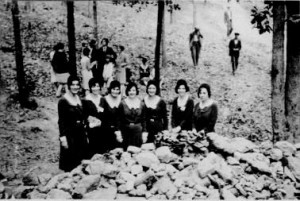
Images of the dedication of the Kings Mt. Monument – Courtesy of AFLLC
For more than thirty years bleached, rodent-gnawed bones gave the slopes a gruesome and eerie appearance. It was a place most found reasons to avoid. In 1815, however, Dr. William McLean of Lincoln County (now Gaston County), North Carolina and a survivor of the battle, enlisted a small group to gather up the remains and place them in a grave. McLean had a small monument carved from a slab of soapstone quarried on the grounds and placed it at the foot of the battle ridge, near the site where a number of patriots were buried. This became the first monument. We know little of what took place on the battleground for the next forty years, other than its neglect. However, in 1855, on the battle’s seventy-fifth anniversary a crowd of 15,000 gathered on the mountain to celebrate the victory won there. The visitors marveled over the militia companies from North Carolina, South Carolina and Virginia encamped on the battleground and were entertained by a number of distinguished guests. Among these were two grandsons of Colonel William Campbell–William Campbell Preston and General John S. Preston who was one of the speakers of the day. The most notable guest for the day was George Bancroft, the Secretary of the Navy and acting Secretary of War under President Pierce. 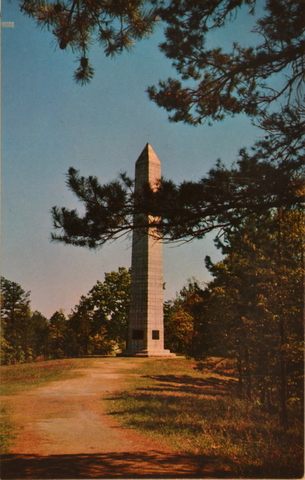
In his speech, Bancroft extolled the beauty of the area and the historical importance of the site and pointed out why “the North” should extend its sympathy and thankfulness for the site. “They sent you no aid in the hour of your greatest need,” said Bancroft. “It is a blessed thing to give even a cup of cold water in a right spirit; it was not then possible to give even that. All honor must be awarded to the south, since she was left to herself alone in the hour of her utmost distress.” In closing, he made a poignant statement: “Let the battleground before us be left no longer as private property; let it be made the inheritance of the people.” This statement struck a cord with a number of prominent people in the audience.
Though some time passed after Bancroft’s proclamation, eventually a committee made up of men from North and South Carolina calling themselves the Kings Mountain Battleground Association, purchased thirty-nine and one-half acres of the battleground from private owners and placed them into a trust.
As the centennial of the battle of Kings Mountain approached, the legislatures of North and South Carolina appropriated $1,000 each to erect a monument. Another eight hundred dollars were received through private donations to meet the costs. The centennial’s unofficial festivities began several days before the anniversary of the battle. A large number of “early bird” visitors came a week before and pitched tents around the battleground. These were soon joined by a large company arriving in a long wagon train from southwest Virginia. Amid an excited crowd, at eleven-thirty on the morning of October 7, a procession of honored guests was led to the grandstand by a militia unit. The day’s events were presided over by Virginia’s Governor Holliday with Congressman John W. Daniel of Virginia as the main speaker. A choir of one thousand sang a song composed by Clara Dargan McLean of York. Of course, the main event of the day was the unveiling of the monument. Positioned on the highest point of the battle ridge, the granite monument rests on an eighteen square foot base and rises twenty-eight feet. Four young ladies assisted governors from four states unveil the marble slabs imbedded in the granite monument. These slabs honored the battle and listed its participants. One of the tablets testified of an unforgiving error: the name of the American commander, Colonel Charles McDowell was omitted.
While this second monument, stood over the battleground, the historic grounds fell into neglect. As the members of the Kings Mountain Association grew old and died, the mountain became a no man’s land and a nest of bootleggers. Still, within the hearts of some burned the love of the mountain’s history and its bloody contribution to the nation. On 31 January 1899, a quiet meeting took place at the York home of Miss Lessie Donnom Witherspoon. This meeting would eventually elevate the battleground to its rightful place in history and turn it into a national treasure. On that day the Kings Mountain Chapter of the Daughters of the American Revolution was organized by “Miss Lessie” and twelve other members: Mrs. B. N. Moore, Mrs. R. M. Bratton, Miss Maggie M. Moore, Mrs. S. M. McNeal, Miss Margaret A. Gist, Mrs. Mason Bratton, Mrs. R. H. Hanahan, Miss Sarah Francis Gist, Mrs. Sarah E. Tillinghast, Mrs. Eugene Gary, Mrs. S. E. White and Miss Rosa J. Lindsay.
From its inception, the women of the Kings Mountain Chapter were valiant guardians of the site and unswerving keepers of the dead. Once a year they would have the site cleared of brush and undergrowth. Soon after the chapter’s organization, Judge I. D. Witherspoon, the father of “Miss Lessie,” invited Major A. H. White of Rock Hill to speak to the ladies at his and his daughter’s home. During a social time after his speech, Mr. White was asked about his thoughts on how the Kings Mountain battleground should be preserved. Without hesitation, he suggested it should be turned over to the chapter that carried its name and lived within its shadow. When approached, the governors of North and South Carolina, Colonel Asbury Coward of the Citadel, and the other surviving members of the 1880 Centennial Association agreed to relinquish to the chapter their holdings of thirty-nine and one-half acres. Judge Witherspoon helped the ladies incorporate the Kings Mountain Centennial Battlefield Association. Though the members of the association consisted of the same members of the Kings Mountain Chapter of the DAR, it was to function as a separate organization. Miss Witherspoon was chosen perpetual president.
The Federal Monument
Shortly after receiving ownership of the battleground, the Kings Mountain Centennial Battlefield Association, began seeking ways to entice the federal government to erect a monument that would bring national honor to the battleground and its heroes. When Congressional Representatives E. Yates Webb of North Carolina and David E. Finley of South Carolina were approached about the possibility, they both were taken with the idea. In 1904, at the first session of the 58th Congress, Webb and Finley introduced identical bills for the erection of a monument on Kings Mountain. Separate bills (Bill 11959 by Webb and Bill 11958 by Finley) were presented because the battleground was in both North and South Carolina. When Speaker Cannon failed to get the measure passed, it fell to 59th congress scheduled to meet in its first session in December 1905. Again, the Congressmen introduced identical bills. Passage seemed unlikely since two other bills for monuments were already pending: one for the battlefield at Princeton, New Jersey and another for the site of the Pilgrim’s landing on Cape Cod. Representative Thomas of North Carolina introduced a substitute bill on 10 April 1906 with a $30,000 appropriation. The bill carried.
A New York architectural firm was chosen to design the monument that was said to be a duplicate of a national monument at Gettysburg. Originally the Kings Mountain monument was planed to stand 115 feet but since a considerable amount of extra excavation would be needed, it was reduced to eighty-three and one-half feet. The granite was quarried near Mount Airy, North Carolina.
The Rock Hill Record reported on Oct. 23, 1907 – Plans for a new monument at the Kings Mt Battlefield. “The plans and specifications are by the firm of McKim and White of New York City. Major celebrations have taken place on the battleground in 1815 and in Oct. 1880, when a three day celebration was held.”
The site was for the federal monument was chosen on 8 Sept 1907 by Congressman Webb, Colonel A. Coward, E. B. Steward of the United States Army, M. H. Shuford of Gastonia, Joe Shuford of Texas and E. A. Patterson of Cleveland County. Two years later, in time for the quescentennial, the white granite monument was completed, resting on natural bedrock foundation surrounded by a height that had once been aflame with musket fire and crawling with upcountry settlers and belligerent redcoats. The 1909 dedication was a huge success for both Carolinas. Nearly a week before the celebration, families began to arrive and pitch tents along the roads. At night campfires of those who waited the ceremonial day lighted the surrounding woodland. Before dawn of October 7, campers along the roadside were awaken by the noise of an endless stream of buggies, carriages and wagons rattling and rumbling along the roads. Never had such a large crowd assembled on the mountain crest. Governor Martin F. Ansel of South Carolina presided over the celebration and unveiling. Dr. Henry N. Snyder, president of Wofford College was the main speaker. Assisted by four young ladies, the governors, (Ansel of S.C., Kitchin of N.C., Patterson of T.N. and Brown of G.A.) unveiled the monument. The unveiling, however, was somewhat incomplete, as the bronze tablets designed for the obelisk had not arrived in time for the event. These would correct a previous error and included Colonel Charles McDowell among the American commanders. Though the ladies of the Kings Mountain DAR seemed to have taken a subdued position during the celebration was completely under the auspices of these women.
Sometime after the centennial celebration, Major A. H. White of Rock Hill erected a granite marker at the site where Colonel Ferguson fell mortally wounded. At the same time he placed a maker at Ferguson’s grave and originated the custom of placing a small rock on the grave. This custom was performed well into the twentieth century by children and young people who brought stones from afar, casting them on the grave so that “Ferguson could never rise again.”
McLEANS OF YORK by Louise Pettus The battle of Kings Mountain, often called the “Turning Point of the American Revolution,” was fought October 7, 1780. In spite of the importance of the battle, the battlefield was neglected for 35 years. In 1815 following the victory of Andrew Jackson over British troops in the battle of New Orleans there was a great wave of patriotism. Old veterans of the first war against the British were reminded that they had not put up markers at the sites of their victories. Dr. William McLean, a veteran of the battle of Kings Mountain, then living in Lincoln County, NC, was determined that a marker be placed on the site. At his own expense, he hired a stone cutter to inscribe on a sandstone found on the grounds: “Major Ferguson, belonging to his British Majesty, was here totally defeated and killed October 7, 1780.” On the other side of the stone: “Sacred to the memory of Major Chronicle, Captain Mattox, Lieutenant Boyd and Rabb, who were killed fighting in defense of American liberty October 7,1780.” When Dr. McLean and other veterans went to the mountain to clear a spot for the monument they found numerous human bones above ground indicating that animals had been able to tear up the original shallow graves. There was no planned celebration; no invitations were issued except to veterans who understood that there would be much hard work involved. Still, the bringing together of old comrades was never forgotten by the veterans. Over the years the monument was chipped on by so many people seeking souvenirs that it was badly mutilated. The first celebration of the battle occurred on its 75th anniversary. Invitations to the “jubilee” were sent to everyone from the president of the United States (Franklin Pierce) and his cabinet to all descendants of the Revolutionary combatants.
John S. Moore was chairman of the Committee on Arrangements. He had 60 members of his committee. There were two main speakers: S. C. senator John S. Preston, a grandson of Col. William Campbell of Kings Mountain fame and George Bancroft, famed statesman and historian. Fifteen thousand people came to the battlefield on October 7th. Yorkville, the nearest SC town had a population of only 1200 and found it difficult to handle the demand for housing. One of Dr. McLean’s sons, Col. Joseph A. McLean, was a highly respected probate judge of York County. Col. McLean had a son also named Joseph. The second Joseph McLean (1861-1924) grew up in Yorkville and graduated from Davidson College.
Following Davidson, McLean studied music in New York and Cincinnati. He then taught music for 40 years in Mississippi, Georgia, Tennessee and Charlotte, N. C. He was longest at Agnes Scott College in Decatur, Ga. where he was director of music for approximately 25 years. One of his achievements was writing the music for nine songs in the Presbyterian church hymnal which was used world-wide in the years 1901-1927.
When World War I broke out in Europe, McLean tried to volunteer but was turned down as not physically fit. He then worked at the YMCA camp at Camp Gordon near Augusta, Ga. He was soon put in charge of the “ Y” building at the Atlanta General Hospital. Before the war was over McLean was chosen to direct the Red Cross in Atlanta and in Charleston, S. C. McLean threw his heart and soul into the Red Cross work. When the war was over his health was broken. He returned to York. In spite of his weakness he took in music students. He also served as organist at York’s First Presbyterian Church. McLean loved flowers and had a beautiful garden. He also loved people. Everywhere he went he made friends. He had married in 1893. His wife, Elizabeth Graham of Charlotte, died 11 months later in September 1894. She and her infant were buried in Elmwood Cemetery in Charlotte. Following his death on December 29, 1924, Joseph McLean was buried beside Elizabeth and their infant.
(Information courtesy of and from: YCGHS – The Quarterly Magazine)
1930 Celebration
The crowd attending the 1909 celebration was bested when 50,000 attended the October 1930 sesquicentennial. During the preceding February a delegation of four senators and all representatives of North and South Carolina, Governors Max Gardner of North Carolina, John Richards of South Carolina and others presented President Hoover with an invitation. He and the First Lady accepted.
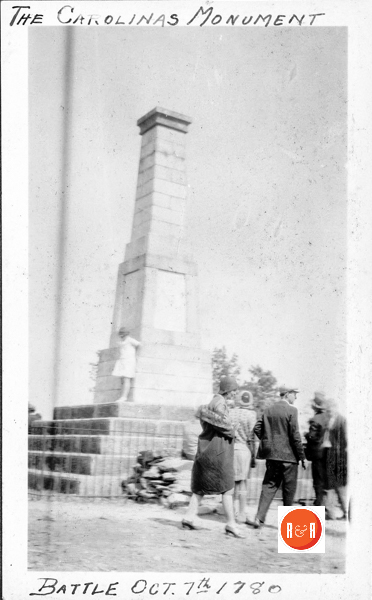
Images courtesy of the White Collection – Pettus Archives at Winthrop University
For a year the Central Committee planned the celebration. This committee consisted of prominent people from Raleigh, Charlotte, Gastonia, Rock Hill, York, Clover, Kings Mountain, Gaffney and Grover labored for the celebration. Those serving from York County were: Mrs. R. M. Bratton and Miss Lessie D. Witherspoon of York, Dr. J. B. Johnson and J. C. Hambright of Rock Hill and V. C. Hambright of Clover. The committee estimated the celebration would cost something between twelve and fifteen thousand dollars. York County members of the South Carolina Legislation appropriated $3,000 of the county supply bill. Private donations and other county and state appropriations completed the cost. The committee oversaw everything from the paving of roads and building a parking area for 25,000 cars, to decorations.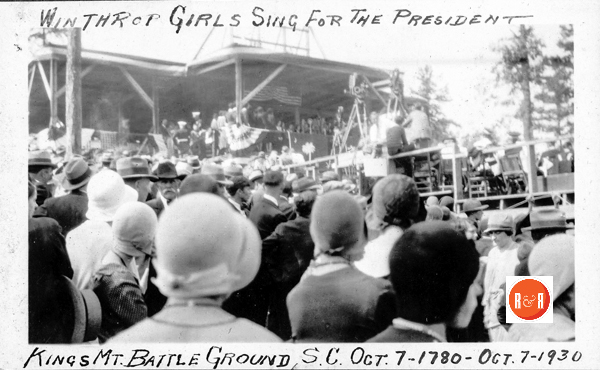
President Hoover and his wife arrived in Kings Mountain, and were greeted by thousands of spectators and a 21-gun salute from the largest assembly of military men since World War I. On the morning of October 7, the caravan carrying Hoover and other dignitaries arrived on the battleground. Seventh Grader Myrtle Ramsey of York attended the celebration and wrote in her diary: “I wanted to go to the sesquicentennial because it is the first time in many years that the people of North and South Carolina have had the chance to be present at a great thing like this, or to see the president of the United States. When we reached the battleground it did not look as it always does because there were camps, Boy Scouts, stands, thousands of people and cars. “There was a grand program on all day. In the morning there was a beautiful flag drill and the Winthrop College choir of Rock Hill sang a number of songs. In the afternoon the special thing was the president’s speech. Some governors spoke before President Hoover, among them Gov. Richards of South Carolina.
“I enjoyed the afternoon program most because I got to see the president of the United States. We did not give him as hearty a welcome as we should. They also presented Mrs. Hoover with a beautiful basket of flowers.”
Myrtle did not say why she thought the crowd lacked in giving the President a “hearty” welcome; but most likely it was because Solid South Democrats blamed Hoover for the stock market crash a year earlier and the deepening depression.
In his speech, President Hoover warned the Carolinas of enemies to the American political system and declared the nation’s forefathers had created the United States government, leaving “a heritage which this and succeeding generations should preserve with their lives and fortunes.” Perhaps motivated by the failing economy of the nation, Hoover reminded his audience that the government was dedicated not only to the pursuit of material riches, but also to the pursuit of a richer life for its citizens. He extolled religion as the foundation of the nation’s social order and warned that “socialism or its violent brother, bolshevism” could destroy the sprit of equality and could be defeated only “through free and universal education.”
By an act of Congress on 3 March 1931, the Kings Mountain Military Park was created with four thousand acres owned by the public. For nearly seventy-five years the park with its battleground has given testimony to America’s love and willingness to share that liberty with others around the globe. Every generation from the formation of the United States Government in 1876 to the present has been warned that liberty is a fragile thing and must be protected at all cost. Today, liberty is no less fragile or safer from its old enemies.
J.L. West – Author
This article and many others found on the pages of Roots and Recall, were written by author J.L. West, for the YC Magazine and have been reprinted on R&R, with full permission – not for distribution or reprint!
REMINISCENCES OF K.M.A. COMPANY AT KINGS MOUNTAIN BATTLEFIELD
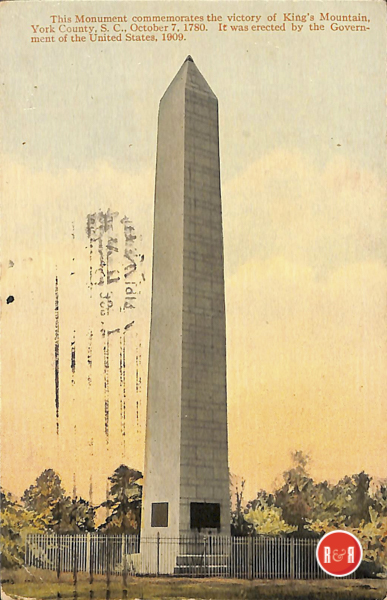
Postcard image of the Kings Mt Monument – Courtesy of the AFLLC Collection – 2017
(In 1930, at the request of Miss Margaret Adams Gist, secretary of the York County Historical Society (the parent organization of the York County Genealogical and Historical Society), Robert J. Herndon of York wrote down his memories of two of his visits to the Kings Mountain battlefield while he was a cadet at the Kings Mountain Military School, a Yorkville preparatory school for the Citadel. The following is an excerpt found in the papers of Miss Gist. The original papers are in the South Caroliniana Library, University of South Carolina.)
…. It has been the custom to hold celebrations — some longer, some shorter — almost every year since the battle was fought, October 7th, 1780.1 was a cadet at the Kings Mountain Military School in Yorkville, S. C. for 3 1/2 years: 1874, 1875, 1876 and half of 1877. This school was founded by Micah Jenkins and Asbury Coward, two Citadel graduates in 1855, and it grew into great popularity. At the outbreak of the Civil War in 1861, this school sent all of its cadets forward with the exception of a very few of the younger boys — many to never return and I have talked to York citizens who saw them march down Main Street to the station where they untrained. It soon became General Jenkins and Colonel Coward, with the former being killed at the battle of the Wilderness, if my memory serves correct. While the cadets visited the battleground yearly for a long time, we went every two years (in October), to view the same and hear the history of the battle from Col. Coward personally. We spent the entire week in the jaunt. A two-horse wagon carried our tenting and provisions with George Melton as cook and Jeff Bailey as assistant. We walked at “route step” the entire distance making on Monday the 16 miles by three or four p.m. and at once went into camp just a stone’s throw north of the pretty little branch that flows partly around the battlefield; making our tents of blankets, quilts and sheets, then gathering pine tags to place our bedding on. The cook made the cornbread and coffee and each cadet fried his own bacon by using a long stick sharpened on one end and then holding it over the fire. You may imagine the appetite of 75 to 80 growing boys after walking sixteen miles! Many of us did not wait for that meat to cook as it should be but oh! how good that cornbread, coffee and bacon tasted, and gracious, how much of it was consumed! All of Tuesday we sit around on logs, rocks, and ground and listened to Col. Coward go through a most interesting story of the battle. The nights being cool, we had large bonfires in front of our tents where we sang, told stories, played practical jokes, etc., until bedtime. We had no reveille, retreat and call to quarters, all military or school rules being suspended. On Wednesday morning we broke camp and walked some 10 miles to Kings Mountain gold mine and this was a great sight to most of the low country boys who had never seen a gold mine; guano pits being their sole experience. We made our camp about one mile from the mine on the Yorkville road and on Thursday we were entirely free to do as we wished. Breaking camp on Friday morning, we marched south to the Bethany church inside of which we slept as the night was dark and rainy. On Saturday, our final walk of 10 miles brought us to barracks, all feeling happy and well repaid as it was really a remarkable experience. There lies in Bethany cemetery, three great-grand uncles of the writer; Major William Henry who died at 104 years of age (on his tombstone), Malcomb Henry and Thomas Henry, whose gravestones are seen at the left of the southwest gate a few feet away.. .. Robert J. Herndon, Feb. 10th, 1930. (Information courtesy of and from: YCGHS – The Quarterly Magazine)
Stay Connected
Explore history, houses, and stories across S.C. Your membership provides you with updates on regional topics, information on historic research, preservation, and monthly feature articles. But remember R&R wants to hear from you and assist in preserving your own family genealogy and memorabilia.
Visit the Southern Queries – Forum to receive assistance in answering questions, discuss genealogy, and enjoy exploring preservation topics with other members. Also listed are several history and genealogical researchers for hire.
User comments welcome — post at the bottom of this page.
Please enjoy this structure and all those listed in Roots and Recall. But remember each is private property. So view them from a distance or from a public area such as the sidewalk or public road.
Do you have information to share and preserve? Family, school, church, or other older photos and stories are welcome. Send them digitally through the “Share Your Story” link, so they too might be posted on Roots and Recall.
Thanks!
User comments always welcome - please post at the bottom of this page.
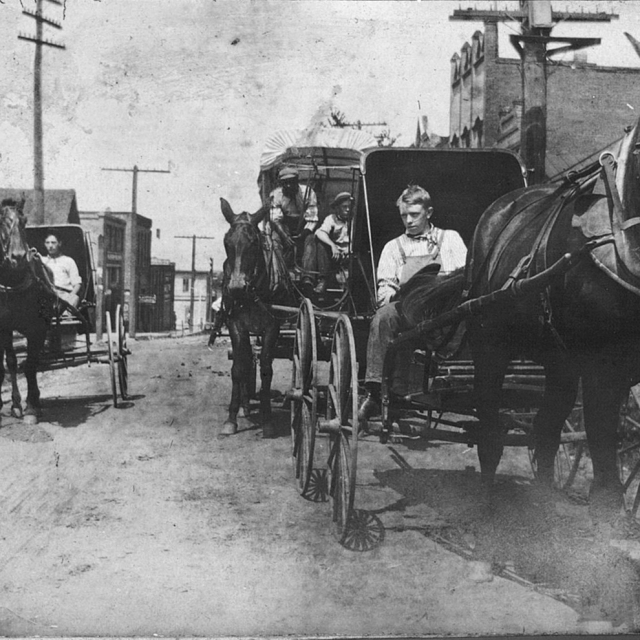
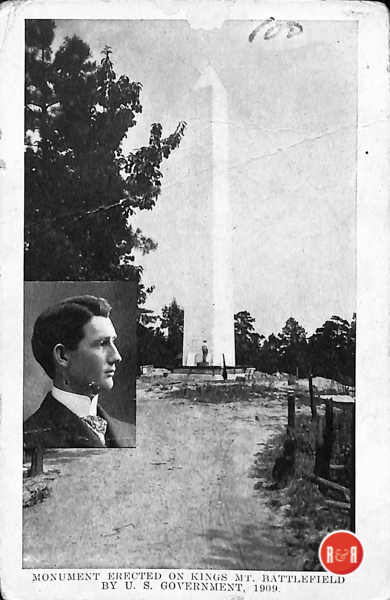
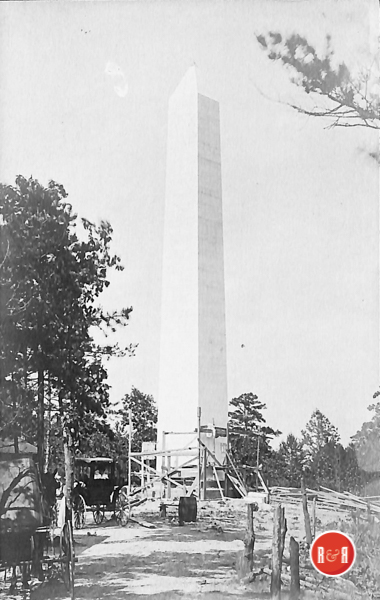
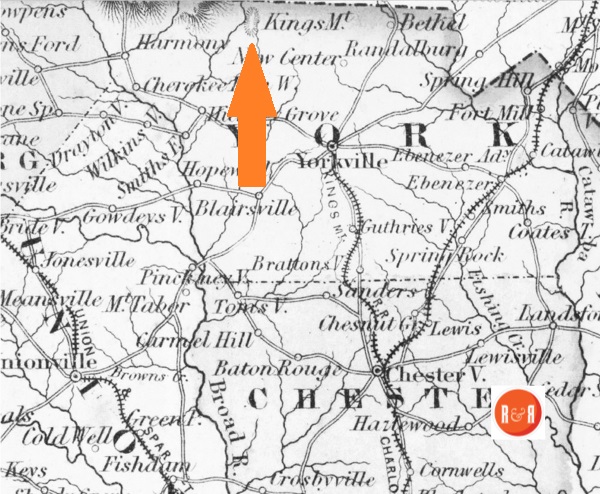
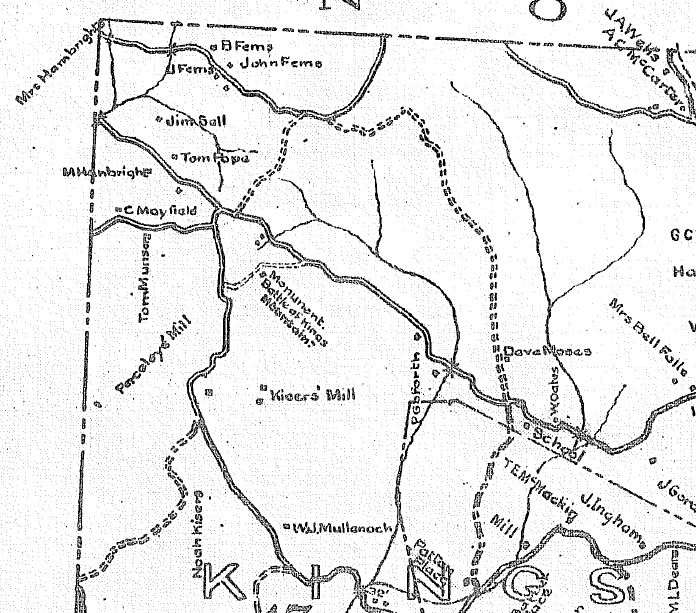
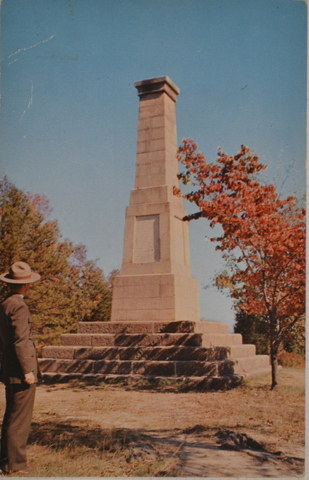
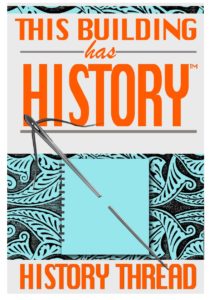

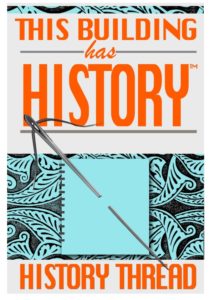
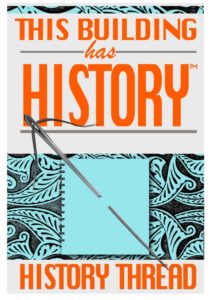

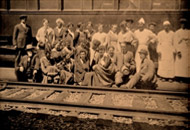
Share Your Comments & Feedback: